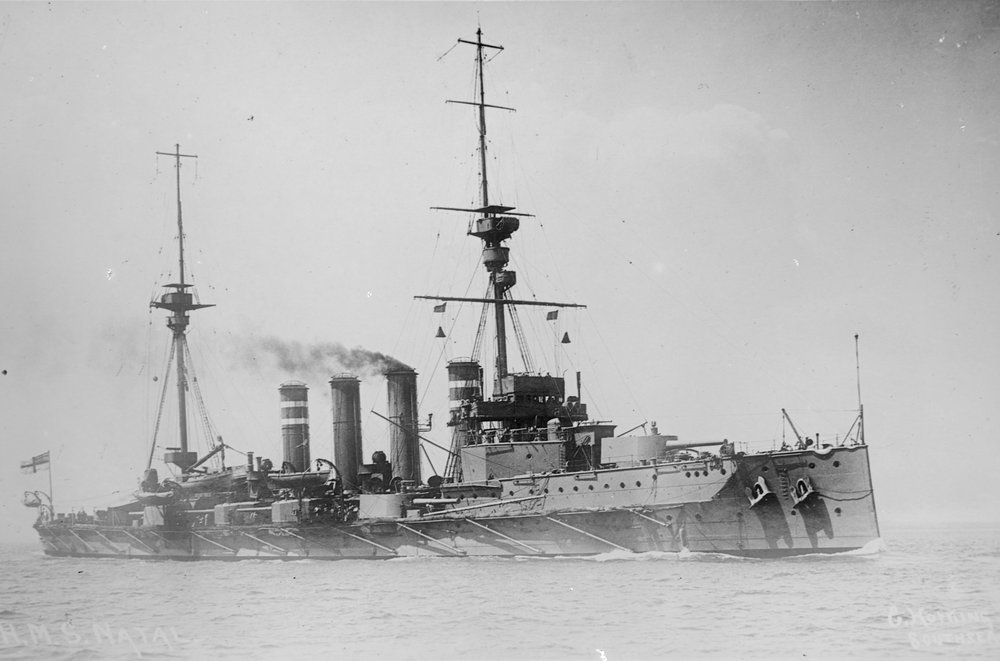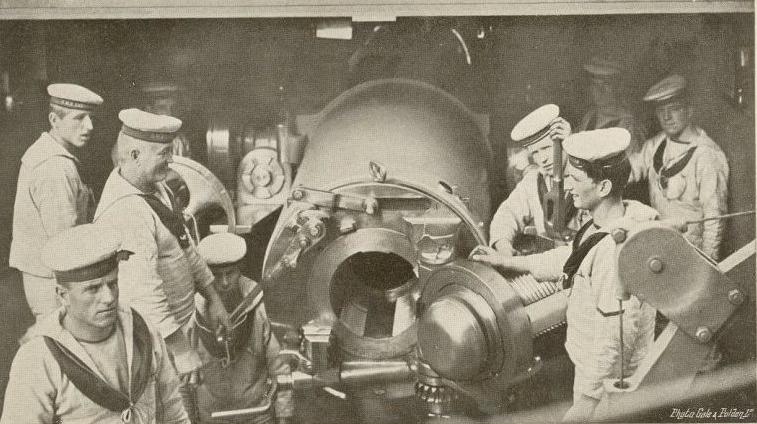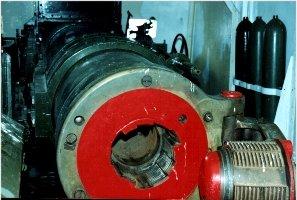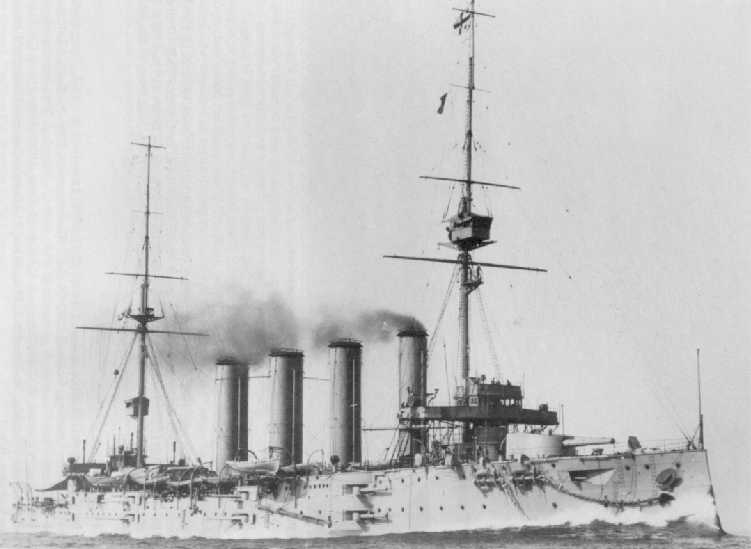|
Extracts from Admiral E.C. Troubridge's courtmartial regarding these guns include these comments: "The 9.2-inch Mark XI [guns used on HMS Defence] has always been known as an inaccurate gun. It is probably due to the high muzzle velocity. The 9.2-inch Mark X [guns]. . . are inaccurate at certain stages of wear of the gun. Otherwise they are accurate guns" and "For the 9.2-inch Mark X and XI and 7.5-inch Mark II the average spread [dispersion] was 200 - 250 yards at a range of 7000 - 8000 yards" (180 - 230 m spread at ranges of 6,400 - 7,300 m). Of built-up construction and wire-wound. Suffered from "steel choke" and too large a propellant grain. In Army guns a smaller grain propellant was eventually adopted and a tapered inner "A" tube was gradually introduced, thus bringing them up to modern standards. A total of 112 guns were made for the Navy of which 12 were later transferred to land service and a further 170 guns were built for the Army. Actual bore length of all guns was 46.66 calibers. The prefix "A" is sometimes found and indicates guns with a "pure couple" breech mechanism rather than the standard three-motion breech mechanism. Mark Xx designation covers guns with tapered inner "A" tubes. The suffix RT following Mark X or Mark Xx indicated a modification to fit World War II railway mountings, but it is believed that no guns were so altered. Two guns intended for the reconstructed Turkish ship Messudieh but never delivered were designated as XT. This weapon was to have used smaller propellant charges with a resulting reduction of 200 fps (61 mps) in the muzzle velocity, but could take the standard MD37 charge. The XT guns had Elswick three-motion short arm breech mechanisms and the British kept these as special reserve railway guns. The designation Mark Xv covers two Army guns that were wire-wound over only part of their length and with no "B" tube. |

HMS Natal with bow and stern 9.2"/47 (23.4
cm) single guns
|

A 9.2" (23.4 cm) gun of the Citadel Battery
at Dover
|

Cleaning 9.2" (23.4 cm) gun
|

Breech of 9.2"/47 (23.4 cm) Mark X gun
used as coastal artillery
|

Armored Cruiser HMS Good Hope in 1907
|
| .
See 9.2 naval |